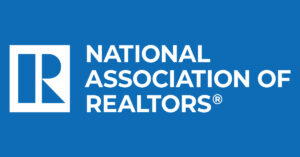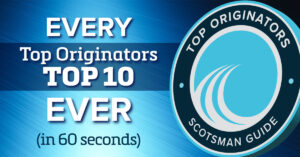The majority of a mortgage originator’s time is spent managing and meeting borrower expectations, networking with prospective clients and industry peers and maintaining strong relationships with referral partners. Keeping up with those tasks is a full-time job in and of itself. When paired with the multitude of daily duties that demand attention, originators often become overburdened.
A mortgage-based customer relationship management (CRM) system can help. With built-in automated marketing features, mortgage companies can improve the experience for their clients and increase the chances of attracting repeat business.
Embrace technology
In order for mortgage companies to set themselves up for success, they need to embrace technology. The manual systems once used for inputting and rekeying data have become outdated and cumbersome, and they are prone to mistakes. The automation capabilities of a good CRM system can offer a modern solution.
The client will always be an originator’s most important asset. As the industry continues into an automated future, originators need to change the way they interact with borrowers. With the automated marketing capabilities that a mortgage CRM system can offer, generating leads and retaining clients can be easier than ever.
To continue to meet their needs, originators first need to know who their clients are, what they want, when they want it and how they hope to receive it. CRM technology is one of the best ways to capture this information and put it to good use.
Establish goals
For any automated mortgage marketing plan to succeed, it needs to have goals. A plan without goals is like a map without markers: You may be able to see where you are, but not how to get where you want to be.
The same mentality applies when using CRM software. Mortgage companies and lenders need to set clear goals that outline what they hope to see their CRM achieve on their behalf. This will help them stay on track and take full advantage of their CRM system’s automation capabilities.
For example, if a company wants to generate more reviews and share them on social media, they should set a specific goal and track their progress. “More reviews” is too broad a goal to track. A “125% increase in reviews,” however, is concrete and easy to track. Set up key performance indicators to track the goals you set on either a daily, weekly or monthly basis.
Research partners
Mortgage companies are always looking to adopt new and intuitive technology into their business. Implementing new technology can be a time-consuming process. This is where technology partners can help.
With the expertise that a third-party vendor can provide, deploying and integrating a CRM system can be a smooth and seamless process. This way, a company’s internal team is able to focus on their specialized tasks. When it’s time to adopt CRM software, the partner can speed up adoption by training employees in the systems and tools they’ll need to use.
In this scenario, a technology partner works alongside an entire team or individual employees to help streamline the CRM software deployment and adoption process. When assessing technology partners, originators should consider whether a tech company has a history of working with the mortgage industry. Does their pricing fit your budget? Is there a dedicated account manager or customer-service team?
Originators should look at the reviews for the vendor and its customer-support team. Other things to consider are how long the company been in business, how many employees it has and how much work the company will do during the heavy lifting of the implementation process.
Partnerships can be valuable assets in the implementation of an automated mortgage marketing program. Doing the research, asking the right questions and defining exactly how a partner can help are vital first steps.
Set up technology
Implementing the technology needed to automate your mortgage marketing isn’t as simple as flipping a switch, but it doesn’t have to be challenging either. The key rests in defining which components and processes will be automated, who will be deploying that automation and what kind of rollout schedule the new automation systems will have.
If you choose to implement a mortgage CRM system, the onboarding process might look something like this:
- Define hierarchy and permission levels, then set up locations for individual mortgage brokers and loan officers.
- Program automated marketing campaigns so originators don’t have to.
- Set up integration with loan origination software and any other required systems.
- Train administrators and originators.
Mapping out the implementation and deployment process is especially important, as not doing so can result in a company failing to take full advantage of its new CRM system’s capabilities. Many mortgage companies that use marketing automation don’t fully utilize the tools it provides them with. This means wasting time and money on a system that could be saving a company both of those things.
Measure results
Once your mortgage marketing is automated, you can begin assessing the results. The benefits are many, but you have to track the key performance indicators you defined. Enjoying these benefits takes time, resources and optimization. Once a CRM system is active and your marketing is automated, you can now kick your evaluation into high gear. Use the dash-board metrics and executive reporting provided by your CRM system to feed into your performance indicators.
To ensure continued success, set regular check-in points where you’ll assess whether the automated processes are on track or not. If they are, great. Let the system keep doing what it’s doing. If there’s room for improvement, however, reevaluate your strategies and try optimizing the system in a different way.
Ultimately, automating your mortgage marketing is an ongoing process. Even when a CRM system is active and your employees have adapted to it, there will always be space for further optimization. For example, consider using technology to optimize your marketing-material approval process.
Next, protect your brand by making your approved marketing pieces available in the CRM system for all mortgage originators to access 24-7. Measure your company’s automated efficiency, gather feedback from your team members, and look for new developments and technologies that could improve your automated marketing efforts far into the future of your company.
Author
-
Kirk King is president of Halo Programs, whose MortgageHalo software platform includes additional features and enhanced functionality to serve mortgage originators. King also is the past president of the Michigan Mortgage Lenders Association, Southeast Chapter. Learn more about HaloMortgage at haloprograms.com/mortgagehalo.




